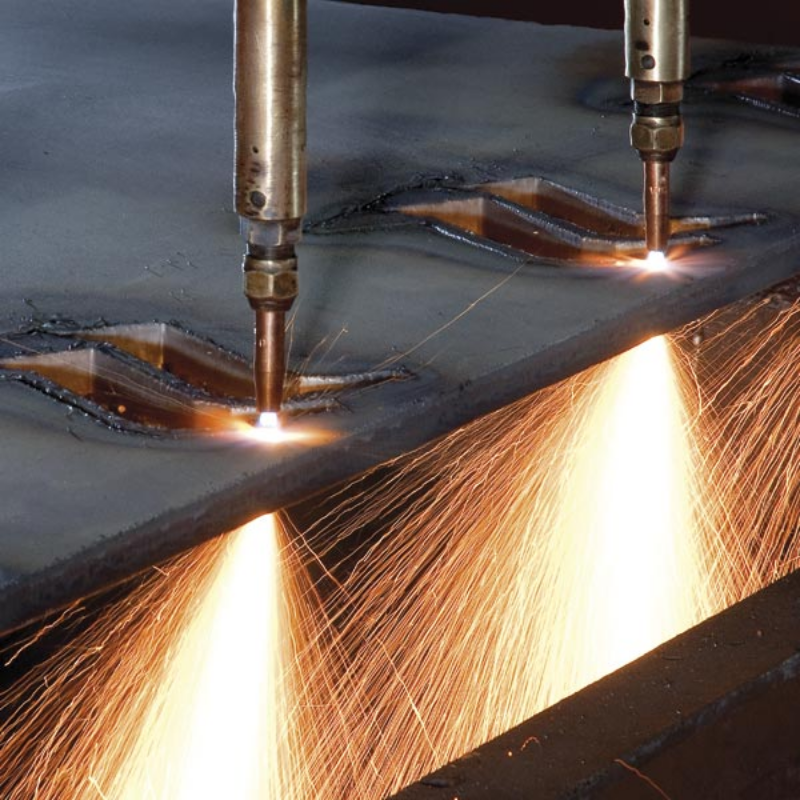How Does the Oxy-Fuel Cutting Process Work?

Oxy-fuel cutting process involves the use of fuel gases or liquid fuels such as gasoline or petrol, and oxygen to either weld or cut metals.
How Does the Oxy-Fuel Cutting Process Work?
Step 1 : Preheat
Like mentioned before, prior to the cutting process, the steel has to be heated up to its ignition temperature, at about 960°C. At this temperature, the steel is bound to react with the oxygen. The heat is then generated by the preheated flames from an oxy-fuel torch where the fuel gas is mixed with oxygen to create a mixture that is highly flammable.
A nozzle with multiple holes is arranged in a circular pattern to focus the flammable gas mixture into multiple small jets. The mixture is then ignited outside of the nozzle, where the preheated flames proceed to form right outside the nozzle tip.
Some of the widely used fuel gases are : acetylene, propane, natural gas, and various other mixed gases alike. By a slight adjustment to the fuel-to-oxygen ratio, the flame will then produce the highest temperature in the smallest flame. This serves to concentrate the heat in a small area on top of the steel plate’s surface.
Step 2 : Piercing
Once the plate’s surface or edge has achieved its ignition temperature, a pure oxygen jet is switched on to pierce through the plate. This process is referred to as “cutting oxygen”, and the jet is formed by an individual bore in the centre of the nozzle.
When the stream of the oxygen cut begins to hit the pre-heated steel, the rapid oxidation process starts. The exothermic reaction takes place to generate more heat here.
The oxidised steel transforms into a molten slag where it has to get out of the way for the oxygen steam to pierce through the plate. Depending on the thickness of the plate, this process typically consumes up to a few seconds.
This time, the cutting oxygen stream is basically pushing deeper and deeper into the plate whereas the molten slag is being blown out of the piercing hole. As a result, a massive geyser of molten steel is produced; or if done accurately, a small puddle of slag will form on top of the plate.
Step 3 : Cutting
Once the oxygen stream has cut through the plate, it is now time for the torch to start moving at a constant speed in order to form a continuous cut. The molten slag that is formed during this phase is completely blown out of the bottom of the plate.
The heat given off by the chemical reaction between the oxygen and the steel preheats the plate right in front of the cut; however, it is not sufficiently reliable to cut without the preheat flames. Ergo, the preheated flames remain throughout the cut, providing more heat to the plate as the torch moves back and forth.
These are merely the fundamentals of the oxy-fuel cutting process. As a matter of fact, there exists a myriad of factors affecting the quality of the cut edge, some of which are the speed, cut oxygen pressure, preheat flame adjustment, cutting height, and plate temperature.
